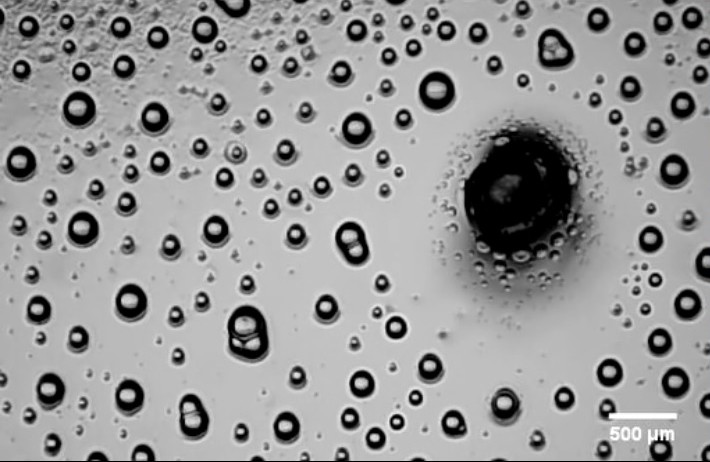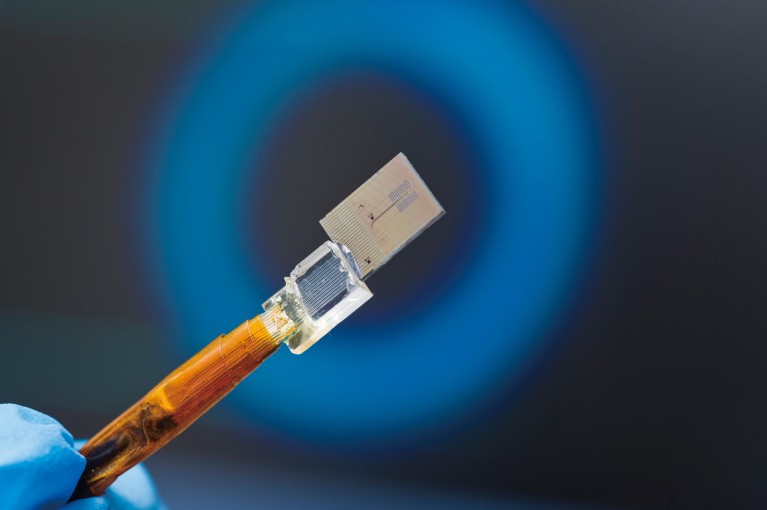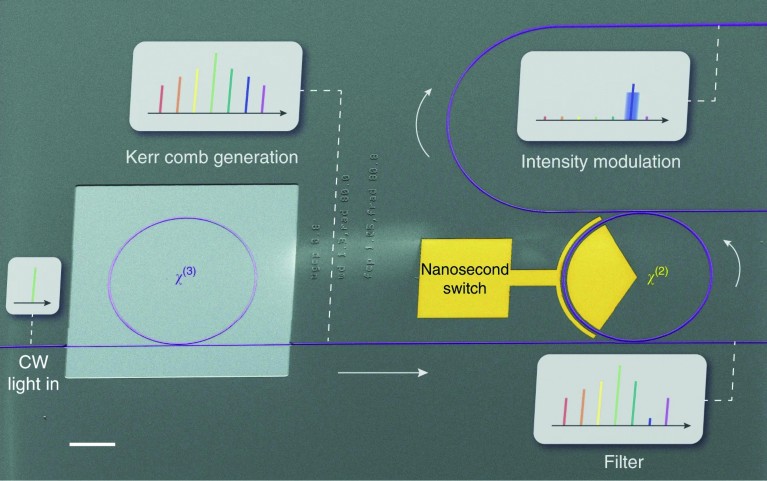A robust search for the next generation of stainless steel
Stainless steel is known for its strength. The higher its strength, however, the lower its ductility, meaning that stronger alloys tend to fracture when deformed or stretched. A joint research team made of scientists from CityU, and two other universities from China, set out to study the nanostructure of stainless steel with an aim to improve both its strength and ductility.
The research team found that the density of ‘nanotwins’, a nano-lamellar structure in the alloy, could be the answer.
Led by Jian Lu, CityU’s Vice-President (Research and Technology), the team studied austenitic stainless steel, and found that when spacing in the structure is between 6 and 129nm, the deformation mechanism increases the density of nanotwins and hence the alloy’s strength and ductility. The findings were published in Nature Communications in March 2019.
Materials scientists now have better insights into how to design classic and new alloys for strength and ductility.
Collecting microdroplets for biomedical analysis
Microdroplet generation or collection has been widely used in drug screening, cell research and other biomedical analysis. Still, scientists have been looking for new technologies for collecting microdroplets in a more efficient and controllable way. Xi Yao, Associate Professor of the Department of Biomedical Sciences at CityU, has recently succeeded in collecting tiny droplets, such as those from a human sneeze, without external force.
A new strategy to transport and collect microdroplets efficiently, harnessing capillary force.Credit: City University of Hong Kong
Yao explains that “microdroplets in micrometre scale are so tiny and light in weight, that gravity is insignificant in moving them.” Inspired by the ‘capillary action’ observed in nature, Yao’s team printed mini-hydrogel dots embossed on a surface, and infused a thin layer of silicone oil. Whether water or oil, microdroplets naturally move towards the dots. Their findings were published in the Proceedings of the National Academy of Sciences of the United States of America (PNAS) earlier this year.
Bacteria in a single micro-droplet are not readily detected, but once collected to form a larger mass, disease detection becomes easier. This discovery, therefore, shows significant potential in identifying infectious diseases.
Moving a liquid droplet uphill
Their work on moving liquid droplets goes further. Another CityU research study has succeeded in transporting larger droplets on solid surfaces without external force, and at a record-high speed of 1.1m/s, for long distance and even vertically, against gravity.
Zuankai Wang of CityU’s Department of Mechanical Engineering, has worked with researchers at the University of Electronic Science and Technology of China, and the Max Planck Institute in Germany, to demonstrate this unidirectional and self-propelled liquid droplet transportation.
In the study published in Nature Materials in July 2019, the team revealed that when water droplets fall on a specially- designed superamphiphobic (super water- and oil-repellent) surface, they will immediately rebound, leaving the surface negatively charged. The resulting charge gradient will drive subsequent droplets towards the more negatively charged direction. This research successfully demonstrates how to develop novel droplet rectifiers that allow for the spontaneous, directional transport of droplets on any kind of surfaces, thanks to a new concept proposed by Wang.
This droplet transportation discovery could find applications in microfluidic devices, bio-analytical devices and beyond.
Improving efficiency of multiphoton upconversion
Miniature optoelectronic devices are commonly used in telecommunications and medical equipment. To manufacture these devices, nanomaterials that can achieve “photon upconversion luminescence” are the key. Upconversion is an optical phenomenon in which low-energy and long-wavelength light stimulates the emission of high energy and short wavelength light. Yet, the luminescence efficiency was often so low that further application has been thwarted. A research team led by Feng Wang, Associate Professor at the Department of Materials Science and Engineering, and Sai-tak Chu, CityU’s Associate Professor at the Department of Physics, developed an upconversion nanomaterial with ‘core-shell’ structure, and made use of a ‘microring resonator-assisted excitation platform’ to enhance the photo excitation process.
An integrated microring resonator was used together with new upconversion nanomaterials to achieve bright upconversion luminescence.Credit: City University of Hong Kong
Not only has CityU’s team enhanced efficiency levels, they have also achieved the upconversion luminescence at a very low excitation power (20 microwatts), converting low- energy, long-wavelength (1550 nanometres) photons to high- energy, short-wavelength (380 nanometres) ultraviolet photons. Their findings were reported in Nature Communications in April.
Analysing semiconductor in electrocatalytic reaction
Light-absorbing semiconductor catalysts are not only a key component of photoelectrochemical energy conversion, but also show huge potential for electrocatalysis and energy storage. To improve the energy conversion efficiency, a better understanding is needed of how the semiconductor-electrolyte interface governing the semiconductor electrocatalytic behaviour.
In a study published in Nature Materials in July, Hua Zhang of the Department of Chemistry and his team, together with two research teams from Nanyang Technological University in Singapore, revealed a self-gating phenomenon in semiconductor electrocatalysis. They found that the electrocatalytic potential itself can strongly modulate the semiconductor electrocatalytic surface to be highly conductive (‘on’) or insulating (‘off’). More importantly, their experimental results suggested that this self-gating phenomenon could universally exist in semiconductor catalysts.
The study provides new insight into the electronic origin of the semiconductor–electrolyte interface during electrochemical reactions, which assists in designing high-performance semiconductor catalysts for various energy applications, such as electrocatalysis, photoelectrochemical catalysis, among others.
Generating and modulating Kerr frequency comb on a single chip
From telecommunications to precision measurements, optical frequency combs are indispensable. These are lasers that emit multiple frequencies of light simultaneously — each of the frequency lines precisely separated like the tooth on a comb.
Previously, due to material limitation, once a frequency comb was generated on a chip, it had to transfer the signals out of the chip and use off-chip components for further manipulation of signals, making the system bulky and expensive.
But recently, CityU’s Cheng Wang of the Department of Electrical Engineering, along with scientists at Harvard University in the United States, jointly developed a chip-scale frequency comb system which can not only generate a Kerr frequency comb, but also filter and modulate it on the same chip.
A lithium-niobate nanaphotonic circuit for frequency comb generation and manipulation.Credit: City University of Hong Kong
This was made possible due to their pioneering use of thin-film lithium niobate as a platform for integrated photonics with low optical losses. The findings could lead to a new generation of fully integrated microcomb systems in spectroscopy, data communications, telecommunications and quantum information processing. The results were published in Nature Communications in February 2019.


